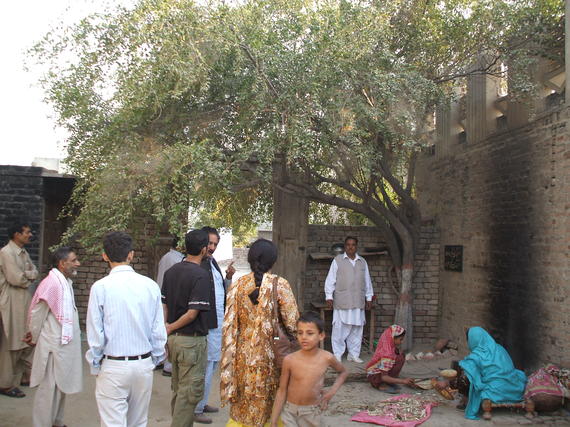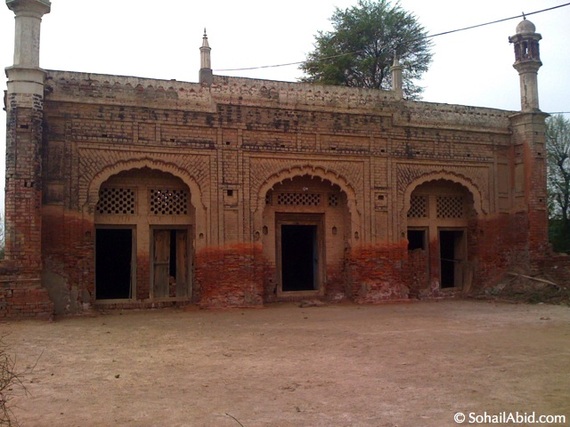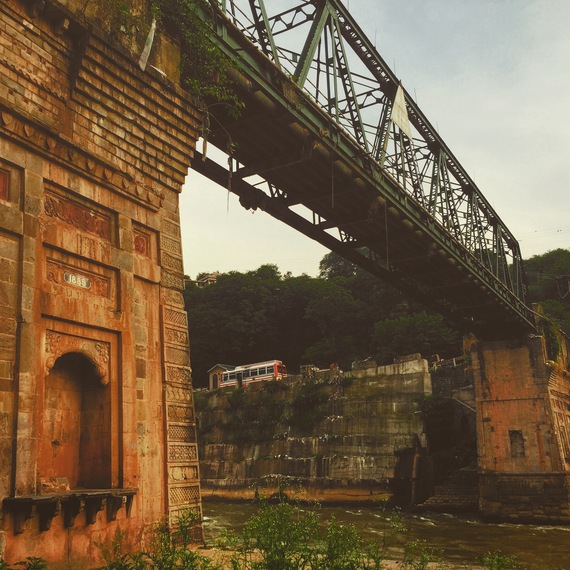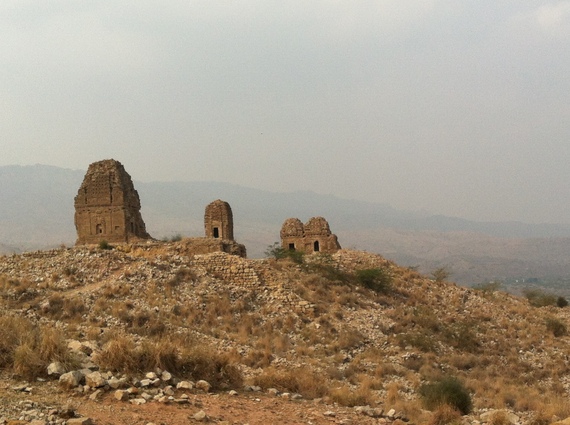Located strategically on top of a mound, to protect itself from the annual flooding of the Sutlej river, is the ancient city of Kasur - now a vast graveyard. Here, several Sufis over the years found abode and then constructed their religious shrines. Legend has it that in the 18th Century, when the mystic Sufi poet Bulleh Shah, who belonged to the city, passed away after harassing the religious clergy for decades through his poetry, the clerics took their final revenge by refusing to offer his namaz-e-janaza, or final prayer - an extreme form of disrespect. They also disallowed Bulleh Shah's followers to bury him in the city.
While the clergy believed they were finally rid of their opponent, the fame of Bulleh Shah was only just beginning to spread. People from across Punjab - the land of five rivers - began traveling to his final resting place to pay homage to the poet. Slowly, a bazaar came up around his shrine. Gradually, as the fame of the shrine spread far and wide, the city of Kasur, too, eventually shifted around the shrine, turning the former city into a graveyard.
It is not just the ghost of Bulleh Shah or the abandoned city of Kasur that haunts the contemporary city. Just a little outside of it are the remains of the mighty Sutlej, once the city's lifeline and now reduced to a swamp with wild, overgrown grass. Besides the old residents, no one even knows a river once flowed here.
Further east, across the India-Pakistan border, is the smadhi of Bhagat Singh, the 23-year-old revolutionary from Punjab who gave up his life for a nationalistic cause. Hanged at Lahore Jail in the darkness of the night in 1931, his body, along with those of his comrades, was taken to the banks of the Sutlej and cremated there.
The Indus Water Treaty of 1960 defines the water-sharing arrangement for six rivers of the Indus basin that flow through both India and Pakistan, giving the waters of the eastern rivers - Sutlej, Beas and Ravi - to India and the western rivers - Indus, Jhelum and Chenab - to Pakistan. Thirteen years earlier, the Radcliffe Award marked the border between the two sides, dividing the history of the country. That is when Bhagat Singh becoming an Indian hero, forgotten in his homeland. The story of the Sutlej is the story of conflict between India and Pakistan over the rivers. It is the story of Bulleh Shah and the religious orthodoxy. It is the story of Bhagat Singh and his homeland.
Ramayana connect
Flowing at the edge of the walled city of Lahore is the river Ravi. There still stand a few massive bridges that connect this part of the country to the other side, symbolic of the mighty river that once flowed under them. But the river itself is a sad reminder of what it used to be only a few decades ago. It flows but like a meagre stream today, having lost its massive river bed to land grabbers.
Many millennia ago, it was on the banks of this river that Lord Valmiki gave refuge to the exiled queen Sita. It was at his abode that Lav and Kush were born and later educated. Further south, near Kabirwala tehsil, are the remains of a temple called Sita Gund. It is believed that Ram asked Sita to wait for him at this spot as he took a dip in the river. Where he emerged, his devotees later built another temple called Ram Chauntra. Across the river, on the other side of the bank, is Laxman Chauntra, where Laxman emerged from the river.
Slowly, as the water from the Ravi dries up, it takes away with it thousands of years of memories. Like the waters of the river, the stories of Valmiki, Sita, Lav, Kush, Ram and Laxman no longer flow through this land.
River of love
Every time I drive over the Chenab, I am reminded of a hapless Sohni caught in the waves of the river, holding on to dear life, to an earthen pot. This is the river of love, which Sohni crossed every day for a rendezvous with her lover Mahiwal. It is here that Heer first laid eyes on Ranjha and was mesmerised by his flute. Mirza and Sahiban took their first lessons in love at a madrassa on the banks of this river.
However, this is also a river of tragedy. It is the same river that drowned Sohni. That wept quietly as it witnessed Heer lose her life after consuming poison, her eyes longing for her Ranjha. The mighty waves of the Chenab could not come to the rescue of Mirza as he was beaten to death by Sahiban's brother.
These stories still flow through these lands, sung and performed by various performers and artists through different mediums. The people of Punjab have not forgotten the sacrifices of these legendary lovers, just like the Chenab which has not forgotten its people and continues to flow through this land.
Blood in Jhelum
It is not water but blood that flows through the Jhelum. At the edge of the city of Muzaffarabad, the capital of what is called Azad Jammu and Kashmir in Pakistan, the rivers of the Neelum and Jhelum merge. This was a sacred spot in pre-Partition Kashmir, where Hindu and Sikh devotees cremated their lost ones. Only a few months after the creation of India and Pakistan, the tribals, instilled with religious passion, collected hundreds of Hindus and Sikhs on the banks of the Jhelum and killed them, throwing their bodies in the river. The blood of those people still flows through the veins of Pakistan. Their cries continue to echo through the valley of Kashmir.
The mighty Indus
Forming the western boundary of Punjab is the mightiest river of them all, the Indus, the fountain from which the Indian identity emerges. It is this river that every migrant into India - the Aryans, Persians, Greeks, Huns, Mongols, Mughals, and Afghans - has had to cross first, giving this land its unique identity. The first seeds of contemporary Indian civilisation were sown here and it is for this reason that the earliest Hindu temples in the region can be found on the banks of this river.
Perched on the top of a mountain, across the city of Mianwali, is the ancient town of Kafirkot, from the pre-Christ era. Local myths state that some of these temples were raised by the Pandava brothers. There are similar complexes further south, next to the river, paying testimony to the ancient civilisations of India that eventually paved the way for what came to be known as the Indian civilisation.
Haroon Khalid is the author of the books In Search of Shiva: A study of folk religious practices in Pakistan and A White Trail: A journey into the heart of Pakistan's religious minorities.



